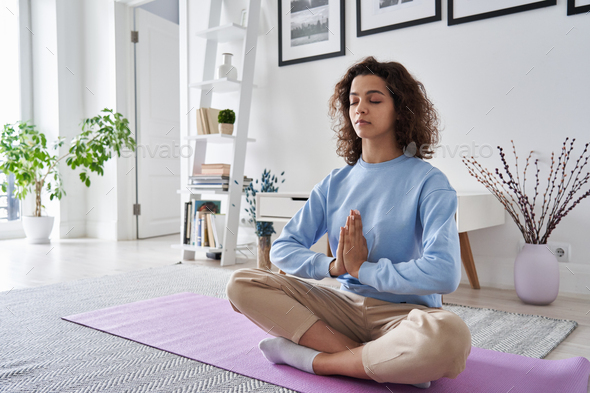Just How to Meditate: A Detailed Technique to Getting Mindfulness and Calm
Reflection offers as a powerful tool for achieving mindfulness and psychological calmness in a fast-paced world. By understanding the basic principles and methods involved in reflection, individuals can cultivate a method that improves their general wellness.
Comprehending Meditation
Recognizing reflection entails grasping its fundamental principles and techniques, which function as the foundation for the technique. At its core, reflection is a mental exercise aimed at advertising leisure, constructing inner power, and creating empathy and insight. The practice encourages people to concentrate their interest, typically with methods such as deep breathing, visualization, or rule repetition.
Meditation can be classified into various styles, consisting of mindfulness, transcendental, and loving-kindness reflection, each with unique purposes and approaches. Mindfulness meditation stresses present-moment recognition and non-judgmental observation of feelings and thoughts, while transcendental reflection includes using particular concepts to go beyond ordinary mind. Loving-kindness reflection concentrates on developing a perspective of love and concern towards oneself and others.
No matter of the method employed, the key objective continues to be consistent: to cultivate a deeper understanding of the mind and its patterns. This self-awareness promotes psychological resilience, clarity of idea, and an extensive feeling of calmness (How to meditate?). By comprehending these concepts and strategies, people prepared for an effective reflection method that can considerably boost their general wellness
Preparing for Your Method
Prior to beginning your meditation method, it is important to create an atmosphere favorable to concentrate and relaxation. Make sure that the area is cost-free and tidy of mess, as a clean atmosphere can help remove the mind.
Take into consideration the lighting, as natural light can improve your mood and power. Soft, cozy lights is typically a lot more relaxing than rough fluorescent lights. In addition, choose a comfortable temperature, making sure that you are neither also warm neither also cold.
Integrating aspects that advertise harmony can better boost your experience. This could consist of soft cushions or blankets for convenience, along with relaxing aromas from essential oils or scent. It can additionally be useful to have a timer set for your meditation session to prevent interruptions from clock-watching.
Basic Meditation Techniques

Another efficient strategy is body scan meditation. This entails mentally scanning your body from head to toe, seeing any areas of stress or pain and knowingly loosening up those muscles. This method cultivates a deeper connection between your body and mind.

Finally, loving-kindness meditation focuses on growing empathy towards on your own and others. Quietly repeat phrases of a good reputation, improving emotional health and interconnectedness. Each of these methods functions as a structure for your meditation trip, enabling you to find the approach that resonates ideal with your personal technique.
Maintaining Emphasis and Mindfulness

Developing a dedicated meditation space can enhance the ability to keep mindfulness. A silent, minimalist environment reduces disturbances, allowing for deeper immersion in the technique. In addition, establishing a time restriction can assist handle expectations; starting with shorter sessions may ease the shift right into longer practices.
Making use of strategies such as body scanning or observing sensations can also reinforce mindfulness. These techniques encourage practitioners to stay present and involved with their physicality, anchoring their focus in the minute. Normal practice is necessary; the mind builds strength with time, producing a stronger ability for focus.
Incorporating Reflection Into Daily Life
Integrating meditation right into everyday life can transform regular activities right into possibilities for mindfulness and self-reflection. By incorporating mindfulness methods into typical jobs, people can cultivate a better feeling of existence and peace among the numerous hours of check everyday life.
Begin by determining minutes throughout your day where you can practice and stop briefly mindfulness. During your morning commute, focus on your breath or the feelings of the setting around you. In the kitchen, method food preparation as a meditative technique, relishing the appearances, colors, and scents of the components. Even ordinary activities like washing dishes or walking can become opportunities for meditation by guiding your interest to the feelings of movement and the audios surrounding you.
Additionally, reserving dedicated times for meditation can reinforce its practice. Start with brief sessions, gradually raising duration as you become more comfy. Use suggestions or cues-- like a details time of day or a relaxing noise-- to establish uniformity.
Ultimately, the goal is to weave mindfulness right into the textile of life, enabling you to approach each minute with objective, therefore boosting your general feeling of wellness and quality.
Conclusion
To conclude, effective meditation needs a quiet atmosphere, a comfortable placement, and a focus on the breath. By allowing ideas to occur without judgment and consistently rerouting attention to the breath, professionals can achieve boosted mindfulness and harmony. Incorporating numerous methods, such as body scanning and loving-kindness phrases, can additionally enhance the technique. Regular reflection, also in short sessions, fosters a deeper connection to the continue reading this here and now minute, eventually bring about better calmness and mental quality in life.
Reflection can be classified right into different styles, including mindfulness, transcendental, and loving-kindness reflection, each with distinct purposes and techniques. Find Out More Mindfulness meditation stresses present-moment recognition and non-judgmental monitoring of sensations and thoughts, while transcendental reflection includes the usage of details concepts to transcend regular thought processes.With your meditation room prepared, it's time to explore numerous standard reflection methods that can help cultivate mindfulness and inner peace.Constantly keeping emphasis and mindfulness during reflection can be challenging, specifically for those brand-new to the technique.Developing a dedicated meditation area can improve the capacity to keep mindfulness.